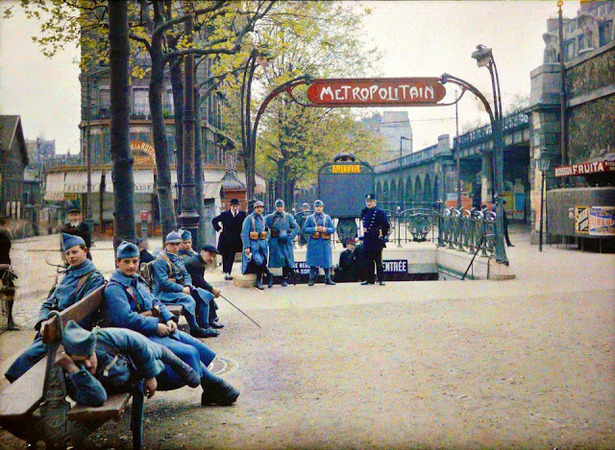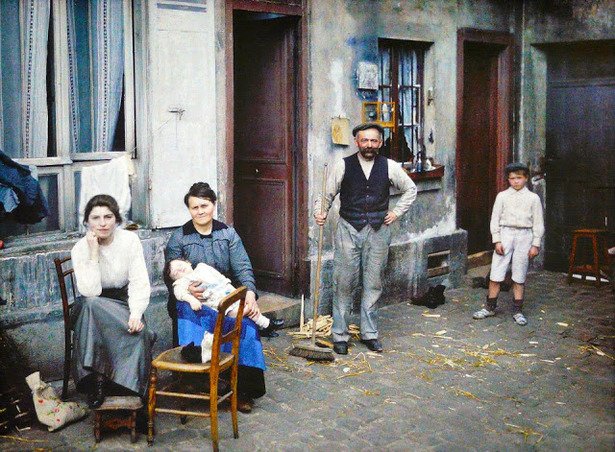We'll Always Have (Early 20th-Century) Paris: The Web's Renaissance of the Autochrome
An old, but beautiful imaging technique preserves a lost Paris, and is itself preserved online.
There are dozens of now-obscure graphic processes, so-called dead media, cherished by coteries of collectors and scholars. And then there is Autochrome, the early color photography system developed by the cinematic pioneer Louis Lumière. Chemically the autochrome was based on humble potato starch, particles of which were dyed red-orange, green, and blue-violet. (There is a full technical explanation in Wikipedia.) The prepared autochrome plate covered a negative, which (after a long exposure) was developed to produce a positive image composed of countless individual points of light,beautiful even when reproduced in magazines or printed individually, as displayed in 2010 at a National Geographic Society show at the Steve Kasher Gallery in New York. Striking as these were when I visited, they were muted compared with a smaller selection displayed at Hans Kraus, Jr., in New York. As the gallery's press release observed:
Today we are familiar with the color pixels of our television or computer monitors, but a century ago autochrome plates struck a visual parallel with the Pointillist painting technique of Georges Seurat (1859-1891), namely that two colors juxtaposed next to each other would conjure up a third color in the mind. As small as the grains were, their uneven distribution resulted in a soft, hazy effect, immensely appealing to the Pictorialist photographers of the early twentieth century, who sought to establish photography as an art form equal to painting and drawing. Today, viewers can delight in the nostalgia of a process that combines the realism of photography with the stylistic elements of the Post-Impressionists.
Visitors had the rare good fortune of seeing the sublimely satured blues, reds, and yellows that appeared when the plates were illuminated by lightboxes For a few precious seconds they could recover a lost chromatic wonderland. No wonder that 100 years ago, the French banker Albert Kahn devoted his life and fortune to paying photographic crews to document the cultures of the world with autochromes in an effort to promote peace and understanding.
Technology is helping give new life to the autochrome; the New York Times reports that LED panels now allow brief viewing of the images in all their glory without heat damage: the ultimate in time travel to a vanished world.
Thanks to Barbie Freidin for the curiouseggs.com link.


